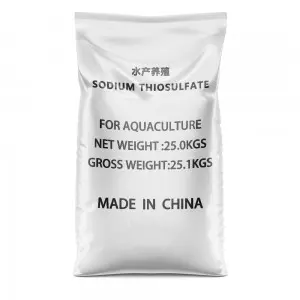



Is calcium ammonium nitrate similar to regular ammonium nitrate in composition and use?
Is Calcium Ammonium Nitrate the Same as Ammonium Nitrate?
Calcium Ammonium Nitrate (CAN) and Ammonium Nitrate (AN) are both important chemical fertilizers used in agriculture, but they are not the same and possess unique properties and benefits that make them suitable for different agricultural applications. Understanding the differences between these two compounds is essential for farmers and agronomists to optimize their fertilizer use, improve crop yield, and ensure sustainable farming practices.
Chemical Composition and Formation
Ammonium Nitrate is a chemical compound with the formula NH4NO3. It is composed of ammonium ions (NH4+) and nitrate ions (NO3-). Its primary role in agriculture is to provide crops with readily available nitrogen, which is crucial for plant growth, particularly for leafy vegetables and during the vegetative growth stage of crops.
On the other hand, Calcium Ammonium Nitrate is a compound that contains both calcium and ammonium nitrate. Its chemical formula is often represented as 5Ca(NO3)2·NH4NO3·10H2O. CAN is a granulated product derived from mixing calcium nitrate with ammonium nitrate, which allows it to provide nitrogen while also supplying calcium. Calcium is another essential nutrient that plays a key role in cell wall structure, enzyme activity, and overall plant health.
Nutritional Benefits
The differences in composition lead to variations in nutritional benefits for plants. Ammonium Nitrate delivers a high concentration of nitrogen, making it very effective for promoting rapid growth and greening in plants. It is particularly beneficial for crops that require large quantities of nitrogen quickly, such as corn and wheat.
In contrast, Calcium Ammonium Nitrate provides a more balanced approach to fertilization. It not only supplies nitrogen but also includes an essential nutrient—calcium. Calcium is important for preventing issues like blossom end rot in tomatoes and helps strengthen plant structures, making them less susceptible to diseases and environmental stresses. This dual action makes CAN suitable for a broad range of crops and can improve soil health by ensuring that calcium levels are maintained, which in turn affects overall plant performance.
is calcium ammonium nitrate the same as ammonium nitrate

Physical Properties and Application
Another difference lies in how these fertilizers are applied in the field. Ammonium Nitrate is hygroscopic, meaning it can absorb moisture from the air, which can lead to caking and handling difficulties. Hence, it needs to be stored correctly in a dry environment and applied as soon as possible after purchase to prevent degradation.
Calcium Ammonium Nitrate, on the other hand, has better physical properties for storage and handling. It is less hygroscopic and tends to remain free-flowing, making it easier to apply using various fertilizer systems. This property ensures that it can be mixed with other compounds without clumping, which is important for large-scale agricultural operations.
Environmental Considerations
Both fertilizers have their own environmental concerns. Ammonium Nitrate has gained some scrutiny due to the potential for nitrogen runoff, which can lead to water pollution and contribute to issues such as algal blooms in waterways. Proper application timing and methods can mitigate such risks, but they remain a consideration for growers.
Calcium Ammonium Nitrate is often considered to be more environmentally friendly because it minimizes nitrogen leaching compared to other fertilizers. This is partly due to the presence of calcium, which can improve soil structure and help retain nutrients in the root zone when applied properly.
Conclusion
In summary, while Calcium Ammonium Nitrate and Ammonium Nitrate share a common purpose as nitrogen fertilizers, they are not the same. Their chemical compositions lead to different functions in plant nutrition, application methods, and environmental implications. Farmers must choose the right fertilizer based on their specific crop needs, soil conditions, and environmental considerations. Understanding these differences can help ensure that fertilizer use in agriculture is both effective and sustainable, promoting healthier crops and ecosystems.
-
Why Sodium Persulfate Is Everywhere NowNewsJul.07,2025
-
Why Polyacrylamide Is in High DemandNewsJul.07,2025
-
Understanding Paint Chemicals and Their ApplicationsNewsJul.07,2025
-
Smart Use Of Mining ChemicalsNewsJul.07,2025
-
Practical Uses of Potassium MonopersulfateNewsJul.07,2025
-
Agrochemicals In Real FarmingNewsJul.07,2025
-
Sodium Chlorite Hot UsesNewsJul.01,2025










